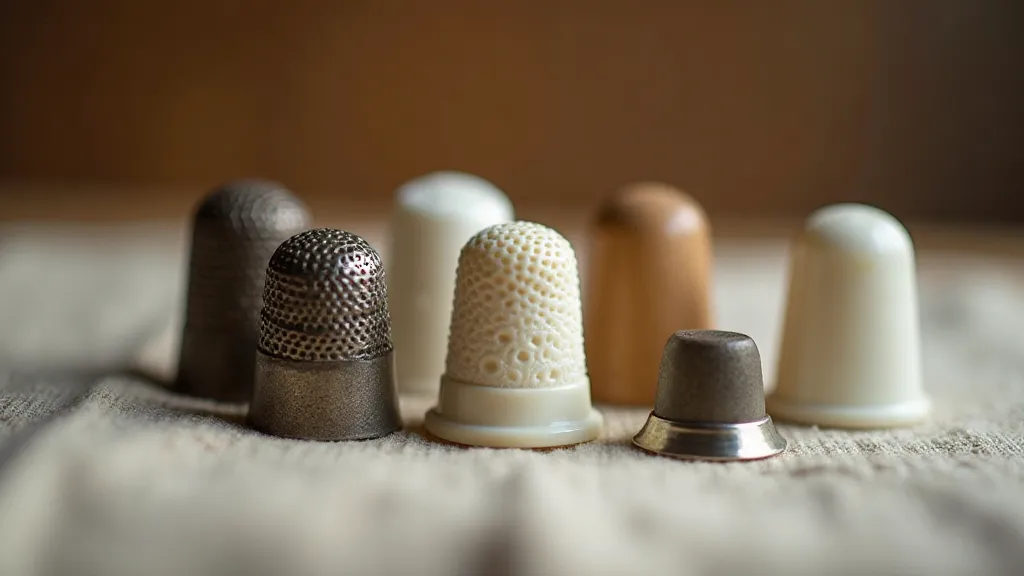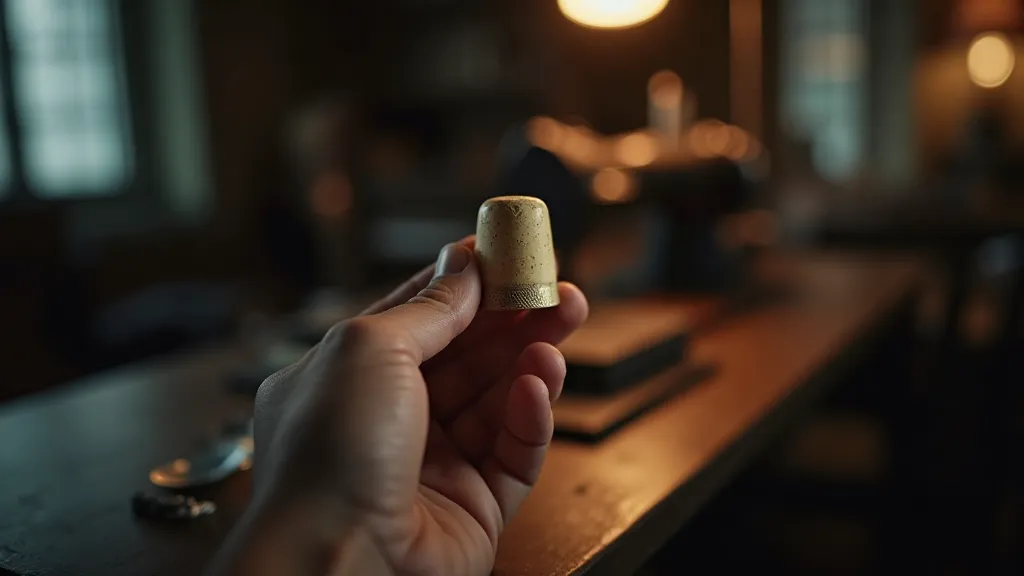The Ghost of the Seamstress: Imagining the Lives Behind Antique Thimble Ownership
There's a quiet magic held within the tiny circles of antique thimbles. More than just tools, they are miniature portals to the past, whispering tales of hands diligently at work, of families clothed, of traditions upheld. Holding one in your palm isn’t just feeling metal or porcelain; it’s holding a fragment of a life lived, a moment captured, a legacy passed down. We, as collectors, stewards, and admirers, owe it to those lives to consider who might have guided that thimble, and what stories it might hold.
Think of the Victorian era. Imagine a young woman, perhaps barely out of childhood, seated at a long, oak table by the window, light dappling across her work. Her hands, small and nimble, guide a silver thimble as she painstakingly mends a worn garment for her family. Perhaps it’s a wedding dress needing repairs, a child's coat needing patching, or a man’s waistcoat needing alteration. The thimble, cool and smooth against her skin, is her companion in those hours of quiet dedication. She dreams of more than sewing, of course, but for now, this is her contribution, her skill, her purpose. The thimble, a simple object, is integral to her role within the household.

The Craftsmanship: More Than Just a Tool
Antique thimbles weren't mass-produced in the way we see today. Each one represents hours of skill and dedication from a metalworker, potter, or carver. The detail on many antique silver thimbles, particularly those decorated with embossed patterns, is truly remarkable. Consider the level of artistry required to create a tiny scene of flowers, birds, or even miniature portraits on such a small surface. The same artistry applies to porcelain and bone thimbles, often hand-painted with intricate designs. Examining these details, appreciating the precision and the artistic intent, provides a deeper understanding of the object’s value – not just monetary, but historical and cultural. The evolution of thimble design is intricately tied to wider textile trends; it’s fascinating to consider how a tapestry of time informs the very shape and ornamentation of these tiny tools.
The materials themselves speak volumes. Silver, often associated with wealth and status, suggests a more affluent owner. Bone thimbles, made from animal bone, were more common among working-class families, a testament to resourcefulness and practicality. Wooden thimbles, often handcrafted, held a rustic charm, hinting at a life closer to the land. Understanding the materials helps us place the thimble within its historical context and, in turn, envision the life of the person who used it.
Thimbles as Heirlooms: Passed Down Through Generations
Many antique thimbles weren’t simply tools; they became cherished heirlooms. Imagine a grandmother carefully placing a worn, brass thimble into the hands of her granddaughter, explaining its significance. Perhaps it had belonged to her own mother, who used it to mend clothes during a time of hardship. Or perhaps it was a gift from a beloved husband, a token of his appreciation for her tireless efforts. The thimble transcends its function and becomes a symbol of family history, resilience, and enduring love.
It's a poignant thought – that these small objects have witnessed so much change, so much joy, and so much sorrow. They’ve been present at births, weddings, and funerals. They’ve been held by hands both strong and frail, by young girls learning to sew and by seasoned seamstresses passing down their skills. The patterns used on fabrics often influenced the decorative motifs found on thimbles, creating a beautiful and subtle connection between the needlework and the tools used to facilitate it. Looking at these details reveals glimpses through a loophole in time, offering a peek into the creative practices of generations past.
Beyond the Victorian Era: A Global Perspective
The story of the antique thimble isn’t confined to Victorian England. Across the globe, cultures have developed their own unique thimble traditions. In Japan, for example, intricately lacquered wooden thimbles were often used alongside silk fabrics, reflecting the country's rich textile heritage. In Russia, painted slate thimbles were popular amongst folk artisans, each one a miniature work of art depicting scenes from rural life.

Consider the itinerant tinkers and menders of Europe, traveling from village to village, offering their repair services. A simple, durable thimble was their constant companion, a tool of their trade, a key to their livelihood. The wear and tear on such a thimble would tell a story of countless miles traveled, of countless garments mended, of a life lived on the road.
The Echo of the Needle: More Than Repair
Beyond the practical need for mending, sewing was often a source of creativity and even social commentary. Think of the intricate samplers created by young women, demonstrating their needlework skills and often incorporating allegorical or political messages. The thimble, in these instances, becomes more than just a tool; it's a silent witness to a conversation, a participant in a cultural dialogue.
The Power of Sound: Aural Connections to Sewing
It’s easy to overlook the sonic elements associated with sewing. The rhythmic click of the needle, the gentle rasp of fabric against fabric – these sounds create a unique atmosphere, a sense of focused energy. Collectors often find themselves drawn to these aural memories, to the echoes of the past that resonate within a single thimble. The connection between the tools, the process, and the resulting sounds offers a silent chorus of meaning that can be deeply moving.
Restoration and Preservation: Respecting the Past
When acquiring or handling antique thimbles, it’s crucial to approach them with respect and care. Avoid harsh cleaning methods that can damage the delicate finishes. Gentle polishing with a soft cloth can help remove surface tarnish, but remember that the signs of age and wear are part of the thimble’s history – they are what make it unique.
Restoration should be undertaken sparingly and only by experienced professionals. The goal is to preserve the thimble’s integrity, not to erase its past. Think of it as protecting a piece of history, ensuring that it can be appreciated by future generations. The enduring value of these objects extends beyond their monetary worth; they are tangible links to the past, and as such, deserve our utmost care.
The Enduring Legacy of the Seamstress
Holding an antique thimble isn’t just about admiring a beautiful object; it’s about connecting with the past, about honoring the lives of those who came before us. It's about recognizing the quiet dignity and resilience of the seamstress, the mender, the caregiver who toiled tirelessly to clothe their families and communities.

Next time you hold an antique thimble, take a moment to imagine the hands that guided it, the lives it touched, the stories it holds. You’ve become, in a small but meaningful way, a custodian of their legacy. And perhaps, if you listen closely enough, you'll hear the faint whisper of the seamstress, a grateful echo of a life well-lived.





